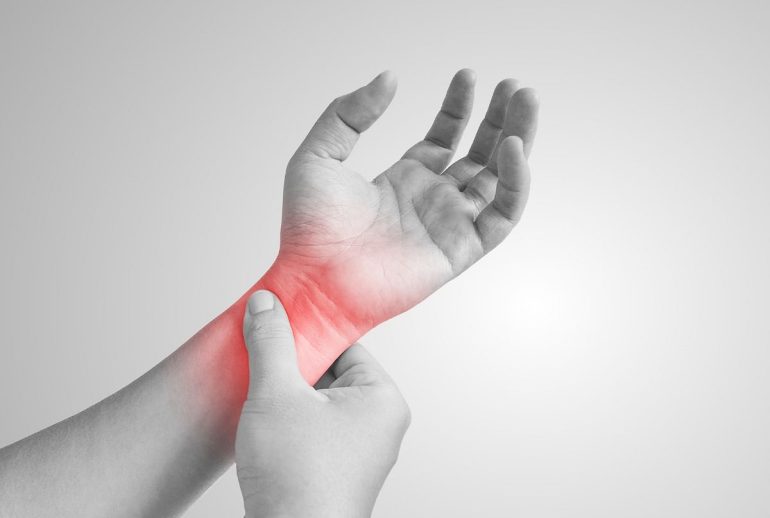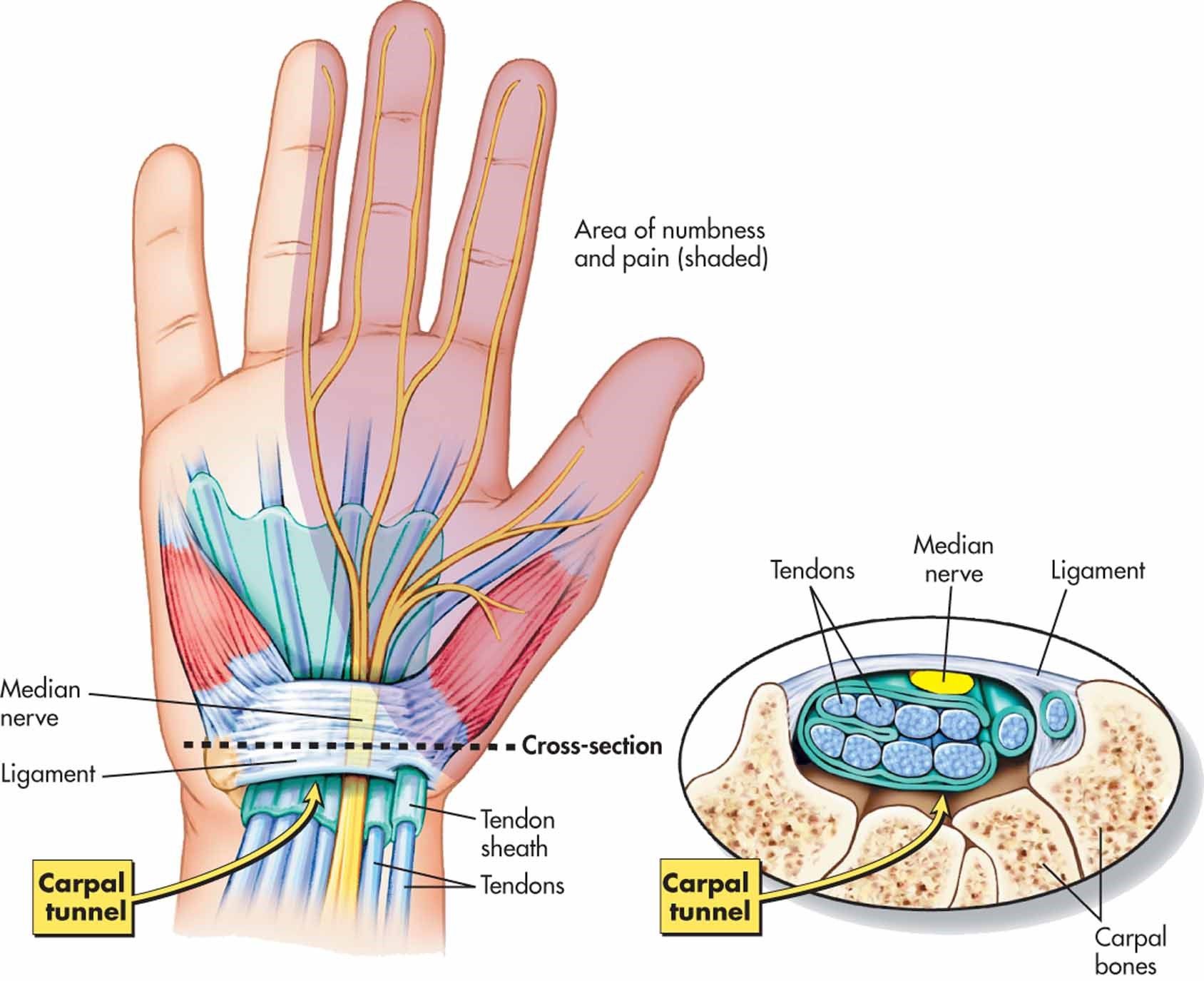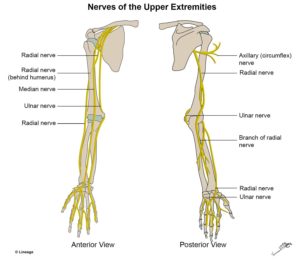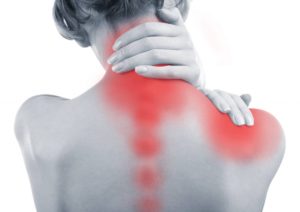Constant numbness and tingling in hand? Minor loss of grip strength? Wrist pain when sleeping? Have a read below as to what could be causing this!
Following from our previous post regarding entrapment neuropathies, today we explore one of the most common form of these conditions known as carpal tunnel syndrome (CTS). The prevalence of this condition is estimated to be up to 5% of the general population with up to 10-15% of people suffering from it once in their lifetime.
What is Carpal Tunnel Syndrome (CTS)?
Carpal tunnel syndrome is a condition characterised by pain, numbness and sometimes weakness in the fingers and hand. This condition is commonly caused by the compression of the ‘median’ nerve as it travels down into the hand through the wrist. CTS is known to be the most common form of nerve entrapment and is also the most common focal mononeuropathy, meaning, the compression/damage to a SINGLE nerve, often in the hands, leg, torso and head.

What causes Carpal Tunnel Syndrome (CTS)?
In our wrist, we have a tunnel like opening known as the “carpal tunnel,” which allows for certain structures to pass through such as the median nerve and tendons of our hands and fingers. When some of these structures become damaged or injured, whether that be through repetitive micro-trauma such as constant wrist sprain and movement or compression of the nerve, you will begin to encounter CTS signs and symptoms.
The most common cause of carpal tunnel is regarded to be the compression of the nerve around the carpal tunnel region. Some of the causes that could cause compression around the carpal tunnel region are:
- Cysts
- Trauma
- Repetitive wrist motions such as forward flexion and typing
- Pregnancy due to swelling
- Bone spurs due to Osteoarthritis
- Rheumatoid arthritis resulting in thickening of tendons and synovium
Characteristics of Carpal Tunnel Syndrome (CTS)
Some of the common characteristics and symptoms experienced with CTS is listed as below:
- Numbness, tingling and burning sensation in the hand (along median nerve distribution)
- Occasional shock and sharp referral into thumb and palm
- Pain at night time
- Exacerbation of symptoms when typing or pressing on wrist
- Loss of grip strength
- Loss of thenar muscle tone (Chronic)
Carpal Tunnel Syndrome (CTS) Management
With most CTS cases, they are mild to moderate in nature and can be managed quite effectively through physical management, exercise and lifestyle/activity modifications. Here are a few at home methods to try to help manage some CTS symptoms.
1. Self-massage/Trigger Point
As for CTS, applying some self-massage along the forearm muscles can be quite beneficial and relieving. As mentioned previously, repetitive micro-trauma through typing and constant gripping motions can lead to inflammation of the nerve as well as compression due to thickening. Releasing the muscles around the wrist and elbow will help for some symptomatic relief.


2. Stretch
Similar to above, aside from trigger pointing and self-massages, releasing those overworked and tight muscles around the wrist and elbow can be quite helpful. Helping stretch out and lengthening these muscles can allow for symptomatic relief, as well as releasing tension along the nerve pathway of which it travels through the muscles. As mentioned in our previous post, nerves are very sensitive and anything can set it off. The less pressure we place onto these nerves, the better the outcome.
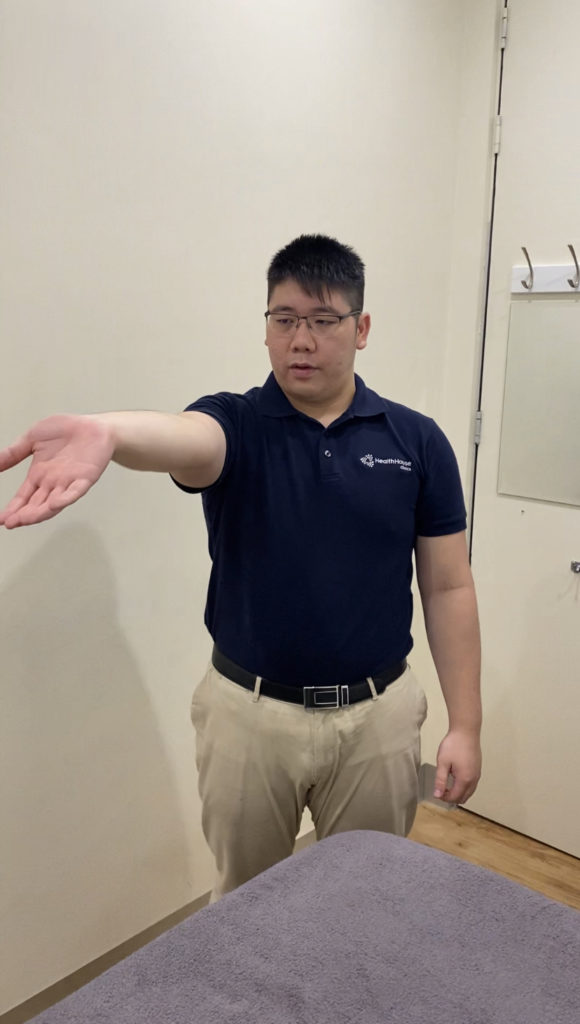
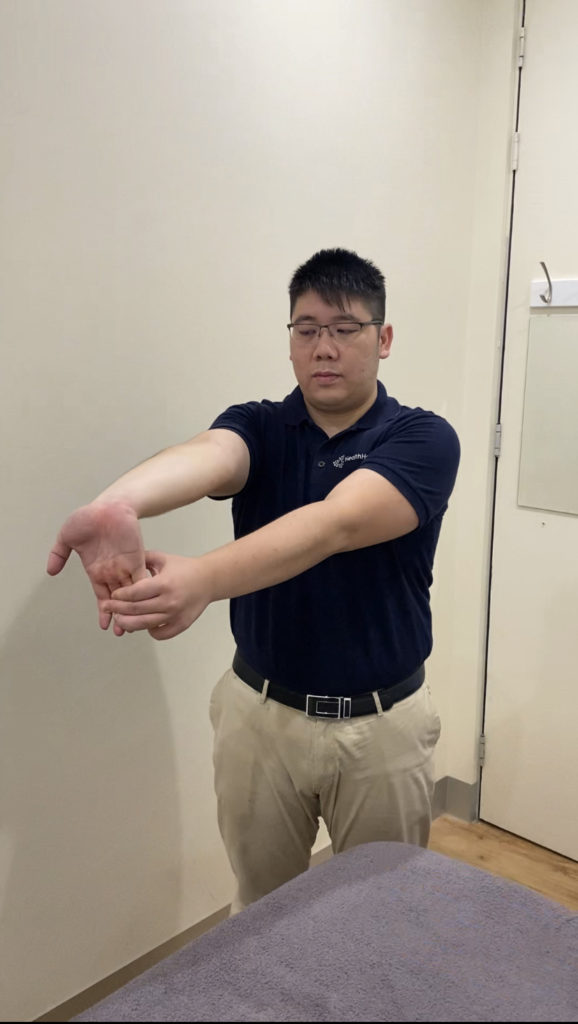
3. Mobility
CTS is a condition where the nerve is affected however the pathway of the nerve is also very important as any kinks along the way can cause development of CTS like symptoms. From that, adding some mobility exercise along the kinematic and biomechanical chain has shown to be quite helpful in the rehabilitation of CTS. Here is a simple thoracic mobility exercises which help with improve simple rotation and opening of the upper back.


4. Nerve flossing
A very common method used for nerve entrapment, as mentioned in our previous post, is known as nerve flossing. The purpose of the nerve flossing is to assist with the recovery of nerve tissues through ‘stretching’ and mobilisations. Below is an example of median nerve flossing which helps CTS cases.
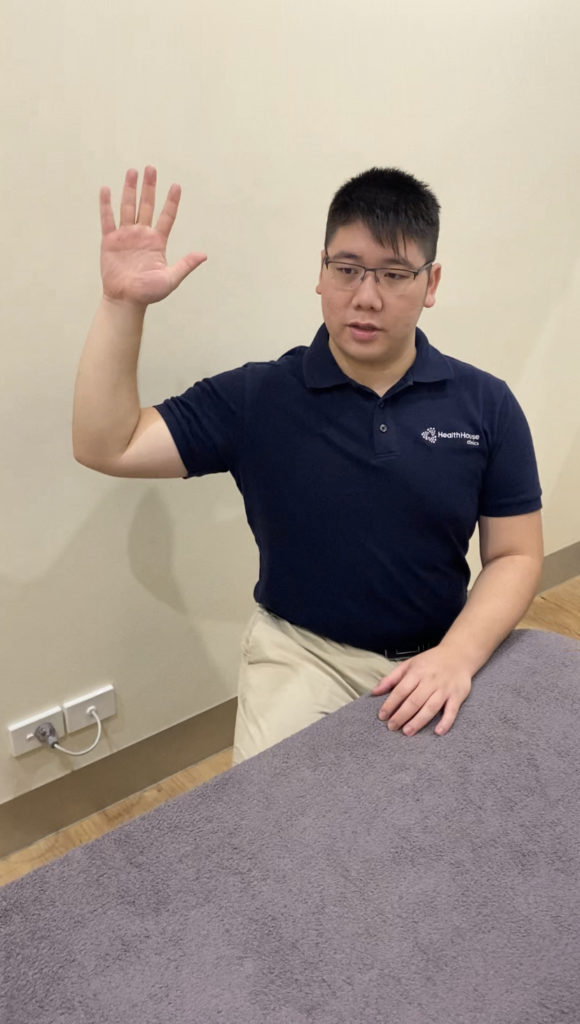
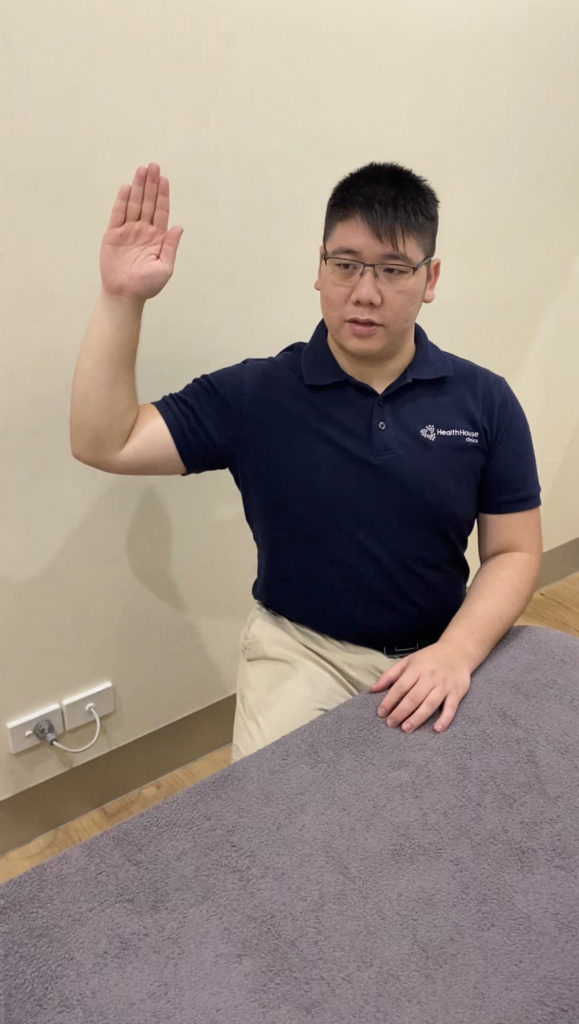
Lastly, as CTS is a condition which is ongoing and can worsen as time goes on, with our without therapeutic interventions. Should the symptoms not ease after trials of treatments or if they worsen, surgical interventions may be explored, should that be appropriate. Depending on the cause of CTS symptoms, removal of the cyst or pressure on the nerve may be advised. Prolonged compression of the nerve and long-term CTS can lead to irreversible damage to anatomical structures and therefore should be assessed as soon as possible for a professional.
Here at Health House Clinics, our practitioners have been qualified to help assess and diagnose CTS with the assistance of GP referral and imaging. Should you be experiencing anything similar, don’t hesitate to contact us to arrange an appointment. If you would like to find out more, contact us on (02) 9524 8862 or email us at info@healthhouseclinics.com.au.
References
https://www.physio-pedia.com/Carpal_Tunnel_Syndrome
https://www.physio-pedia.com/Clinical_Biomechanics_of_Carpal_Tunnel_Syndrome
Kothari M J. Carpal tunnel syndrome: Treatment and Prognosis, Shefner J M, Goddeau R P. UpToDate. Retrieved 12th March 2022, from https://www-uptodate-com.simsrad.net.ocs.mq.edu.au/contents/carpal-tunnel-syndrome-treatment-and-prognosis?search=carpal%20tunnel%20syndrome%20&source=search_result&selectedTitle=1~150&usage_type=default&display_rank=1
https://orthoinfo.aaos.org/en/diseases–conditions/carpal-tunnel-syndrome/
Carpal Tunnel Syndrome Justin O. Sevy; Matthew Varacallo. Last Update: December 21, 2019. Available from:https://www.ncbi.nlm.nih.gov/books/NBK448179/ (last accessed 22.3.2020)
Padua L, Coraci D, Erra C, Pazzaglia C, Paolasso I, Loreti C, Caliandro P, Hobson-Webb LD. Carpal tunnel syndrome: clinical features, diagnosis, and management. The Lancet Neurology. 2016 Nov 1;15(12):1273-84.
Feng, B., Chen, K., Zhu, X. et al. Prevalence and risk factors of self-reported wrist and hand symptoms and clinically confirmed carpal tunnel syndrome among office workers in China: a cross-sectional study. BMC Public Health 21, 57 (2021).

